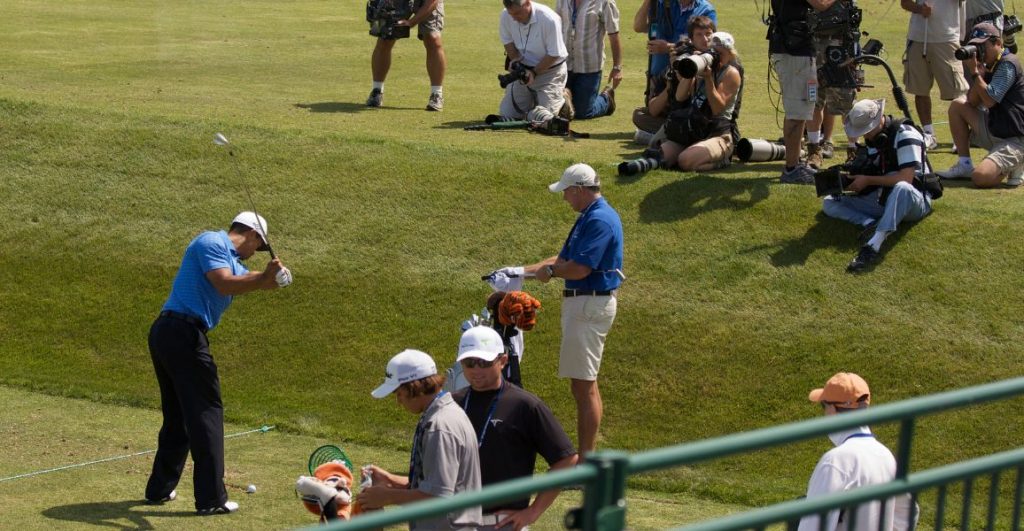You’ve made an incredibly smart decision to research this topic before you go out and spend hard-earned money on a driver that won’t help your game even a little.
Picking the right driver and especially the right length or loft is crucial for your success on the course.
If you do need help picking a driver checkout our below post:
Top 7 Drivers On The Market Today
Using the wrong loft on your driver can cost you so much distance and bags full of golf balls over the course of the year.
Getting it right is crucial.
Now before you read this and decide to buy a new driver, check your current driver first to see if you can adjust the degree using a driving wrench.
This is pretty common in most drivers today so once you read below and find what degree you should use, adjust your driver’s loft and test it out.
If you don’t have an adjustable driver and you’re not using the correct loft, you have two options, continue to hit bad drives or invest in a new driver.
In this post, we are going to keep it as simple as possible so you can quickly identify if you’re using the wrong loft.
Enjoy!
How Much Of A Difference Can Driver Loft Make?
The short answer is driver loft can make a huge difference to how successful you are off the tee. Not only for a beginner golfer but all golfers.
Starting with the flight of your ball, when you use the wrong loft you’re going to rob yourself of the flight needed to hit the ball further.
When you play with a loft that is too low for you the golf ball will not stay in the air long enough to achieve your maximum distance.
On the flip side of that if the loft is too high then the golf ball will fly off into the air too much get caught up in the wind, and lose momentum resulting in less distance.
It’s kind of like the story of the three bears you want it to be just right so you can pierce through the wind and get those big bombs going.
The wrong loft can make your tee shots less accurate and could be the cause of your mishits such as a slice.
If the loft is too low the ball may not be able to stay off the ground long enough to avoid certain hazards, or if it’s too high your ball could be getting dragged around by the wind.
For a lot of amateur golfers one possibility of why they are slicing the golf ball is they are using a driver loft that is too low.
Their natural swing is unable to manipulate the golf club in such a way that the clubface will be square at impact for reasons we will discuss later in the following section.
How Fast You Swing Determines The Loft You Need

If you can find out how fast your clubhead speed is at impact, you can find out exactly what loft you should be using.
In simple terms, a slower swing speed needs more loft to keep the golf ball in the air. When you swing the club faster, you don’t need as much loft.
So how do you find out how fast you’re swinging and which loft suits your speed?
Well, to get your speed just simply book a range session with a launch monitor hit a bunch of balls, and figure out what the average speed was.
Once you’ve got that match up your speed with our recommendations below.
Lofts For Golfers With Swing Speeds Of 84 MPH Or Less
Golfers who fall under this category will find more success in getting the golf ball into the air with a driver loft between 11-12.5 degrees.
Realistically if you went any higher with the loft you would essentially turn your driver into a 3-wood.
By using a higher loft driver the ball comes off the clubface differently than how it would with a stronger lofted driver.
To start the loft is set up so when the ball hits the clubface it’s sent more towards the sky than the ground. Not only this but the added loft causes the ball to spin more.
This additional spin helps the ball rise higher into the sky without the need for breakneck speeds.
Ideally, we always recommend buying an adjustable driver when possible. These drivers allow you to adjust your loft up or down at will.
Meaning if try out the 12.5 degree and now the ball is going too high you can reduce it to a 12 degree, or again try an 11 degree until you get the optimal ball flight.
Lofts For Golfers With Swing Speeds Of 85-96 MPH
The majority of golfers will find themselves in this category as they don’t need tons of help to get the ball into the air.
For this golf swing speed range, you will want to use between 9.5-10.5 degrees.
Important to note that all the suggested loft ranges we are recommending do not all come in stock options from driver manufacturers.
Some of the degrees of loft can only be achieved by having a driver that lets you manually adjust the loft to your liking.
As always you can increase or decrease the loft until you get the required ball flight.
Lofts For Golfers With Swing Speeds Of 96 MPH Or More
Now, for the technically gifted or for golfers who just swing out of their shoes every time a much lower lofted driver will be required.
Because of the high speed at which the golf ball is struck, it doesn’t need much help from the loft to get the ball airborne.
The power transferred into the ball is enough to keep it in the air and flying down the fairway.
Lofts for these speeds will be anything from a 9-degree and lower. The 9-degree should do the trick for the majority in this range but as always adjust until you find the right flight.
You won’t need much lower than this unless your club head speed is clocking in over 105 MPH.
Golf Course Conditions That Suit A Low-Lofted Driver
Playing On A Dry Course
When the course is dry it means the golf ball will run farther on the fairways and even the rough, too.
To make the most of this additional roll hitting a low lofted driver can help the ball land run for longer.
Using a high-lofted driver would result in the ball eventually dropping almost vertically to the ground and not going very far.
Playing At Altitude
When playing golf at altitude because of how thin the air is the ball tends to go higher and travel further.
The issue with this is if you use a high-lofted driver in this situation your ball will balloon into the air which will cause it to lose distance.
By using a low lofted driver the ball will still launch higher than normal but will have a penetrating ball flight which should also run for longer once it lands
Playing In The Wind
If you’ve ever been lucky (or unlucky) enough to play links/coastal golf you’ll know how bad the wind can get.
In golf although in most situations a high bomb is ideal, when you’re playing in these conditions you’re better of going low.
Keeping the ball low will result in improved accuracy since the wind can’t drag the ball around as much.
So if it’s windy where you live, getting used to a loft can help you a lot.
Golf Course Conditions That Suit A High-Lofted Driver
Playing On A Wet Course
On a wet course with soft soil your carry distance is hugely important from the teebox.
The golf ball is not going to run very far since the ball is going to dig right into the ground at impact.
As a result, the ball will almost stop dead. Low-lofted drivers without the necessary height will struggle for distance.
So a higher lofted driver will help keep the ball in the air for longer resulting in a larger carry and more distance on a wet course.
Playing At Sea Level
The closer to sea level you get the more dense the air becomes. Golf balls will not go as high in dense air as it’s almost pulling it down towards the ground.
At altitude, this isn’t an issue.
So using a higher lofted driver will help you get the ball launching high into the air and flying down the course’s fairways.
Playing With Little Wind
As long as the wind isn’t too strong playing with a high-lofted driver is fine and may even come in useful on holes you have the wind at your back.
Since you don’t have to worry too much about the ball being dragged around the course by the wind you can enjoy hitting high bombs and riding the wind.
Is There A Driver Loft That Hits The Ball Furthest?
Although there is no solidified degree that will launch the ball the furthest there is a preferred range for the competitors in long drive competitions.
These competitors tend to have an insane swing speed coming in at around 135 MPH.
To put that into perspective Rory McIlroy, one of the biggest hitters in professional golf maxes out at 122 MPH. This means that the average long-drive competitor has an extra 13 MPH on Rory!
So what loft do they use to set world records? Typically they will use between 4-6 degree drivers which is crazy.
But that doesn’t mean you should set your driver to this because if you don’t have out-of-this-world speed the ball simply won’t get off the ground.
What Are Signs You’re Using The Wrong Loft?
The telltale signs you’re using the wrong loft are easy to identify.
When a golf driver loft is too strong for you the golf ball will consistently struggle to get high into the sky. It will very often stay low and you will lose so much distance.
When a driver’s loft is too high the golf ball will fly off too high in the sky, get caught by the wind, and be dragged around the course.
Now don’t get these mistaken with mishits when you catch the ball too high or low on the clubface.
But if you feel like you’re hitting the ball well but it’s just not doing what it should be then you need to change your loft.
What Loft Do Professionals Use?

This is a tough question to ask because all professionals are different.
For example, Bryson uses a 6-degree driver, McIlroy uses around an 8.5, and there are others on the tour that use up to a 10.5.
The pros know exactly what they are trying to achieve off the tee and don’t need help trying to get it off the tee.
What most of their decisions come down to is distance and preferred shot shapes.
One may know that with a 9.5 they can draw the ball easier but if they drop to an 8.5 it will help them fade the ball.
But basically, there is no magic number they all try to stick to.
They are freaks of nature, their bodies and minds work differently to most, so realistically they could probably get around the course regardless of what loft you give them.
If you enjoyed this post checkout our latest on What the average distances are for each golf club.
